|
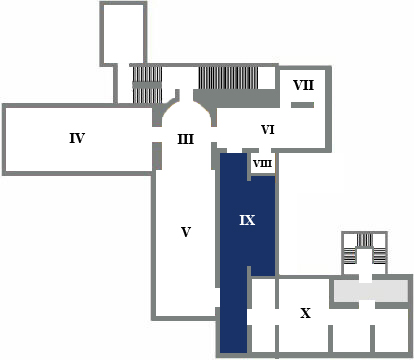
On display in Room IX are the 17th-century canvases illustrating the lively debate between classicism and naturalism and paintings of large spaces and highly theatrical.
|
|
Salvator Rosa
Lot and his Daughters
mid- 17th century
The canvas was painted halfway through the 17th century by Salvator Rosa, who signs at the bottom of the painting.
The painting, with its strong dramatic impact, depicts Lot being made drunk by his daughters. The scene is surmounted by a dark, cloud-laden sky rift with golden streaks of lightning. The three figures, scrutinised by an inner light which enhances the luxuriance of the drapery and the sculptural cast of the bodies, are animated by theatrical gestures.
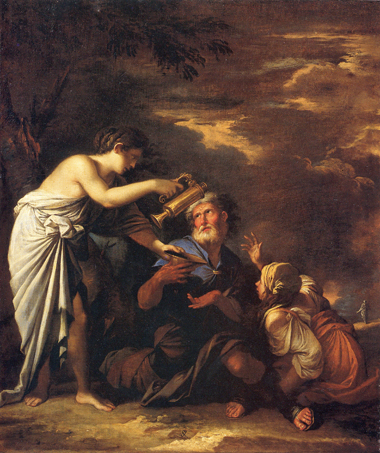
|
|
Anonymous Sienese painter
Memento Mori/Vanitas
c. 1620
This canvas, probably produced in Tuscany around 1620, shows a horrendous Vanitas, the awful elusiveness of life. It is the terrible story of Everyman: his time on earth, represented by an hour-glass, has run out. Death makes ready to seize the unfortunate wretch, who tenaciously and unresignedly seems to clutch at the little light which is left to him.
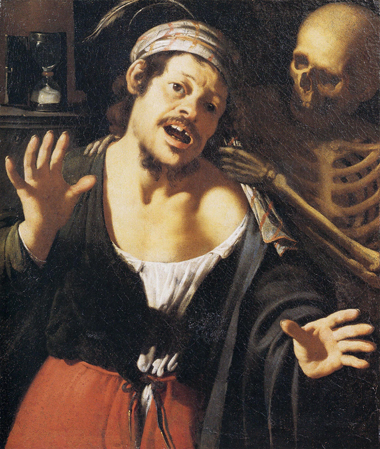
|
|
Pietro della Vecchia
Moses and Aaron with the Pharaoh
second half of 17th century
The painting, from the second half of the 17th century, has been attributed to Pietro della Vecchia. In its monumental Venetian neo-15th-century manner the canvas shows Moses and Aaron with the Pharaoh. The tones clearly reveal the influence of Caravaggio, although this is tempered with the intensity of the Venetian style.
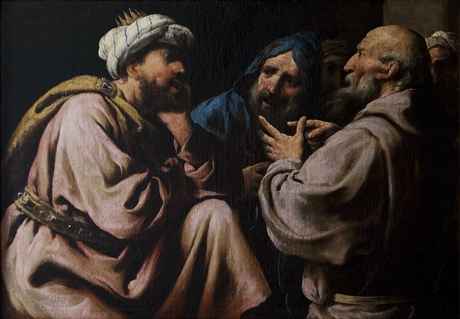
|
|
Anonymous follower of Caravaggio
St. Jerome
first half of 17th century
In this canvas, painted in the first half of the 17th century by a painter clearly under the influence of Caravaggio, we find the latter's stark, powerful tones. St. Jerome is here shown as an old man, a cardinal stripped of his robe in a mortified nakedness, intent on writing and translating the Gospels.
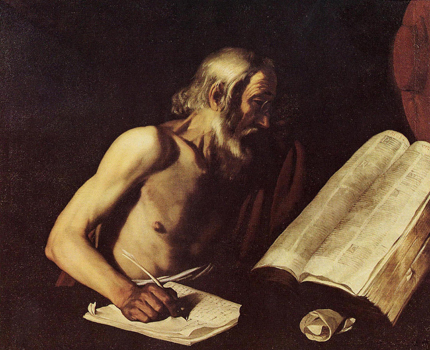
|
|
Ermanno Stroifi
Bacchus and Ariadne
17th century
After long being attributed to Bernardo Strozzi, this painting was subsequently identified as a work of Ermanno Strofi, the Venetian pupil of the great Genoese master. The painting shows the wedding of Bacchus and Ariadne at the moment when the diadem, the gift of the groom, is about to be thrown into the heavens to become a constellation. Bacchus is described with Caravaggio-like tones, with the reddened hands and weather-beaten complexion of a man living in the open. In the presence of Cupid, Ariadne, unable to bear further observation in her sensual nakedness, offers her hand to the groom in a gesture reminiscent of Michelangelo.

|
|
Monsù Desiderio
Nativity
The Flight into Egypt
17th century
The canvas with the Nativity is a pendant of The Flight into Egypt. The two works, both in a good state of conservation, show singular detailed architectural complexes with Gothic constructions alongside ancient ruins. We see a tempestuous world in which the atmospheric events are emphasised to reflect the decline of the certainties acquired by Renaissance man.

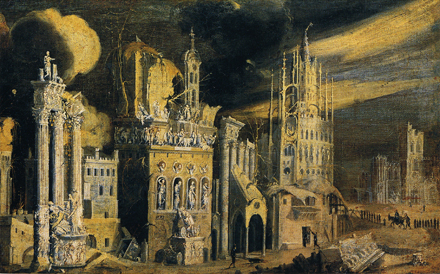
|
|